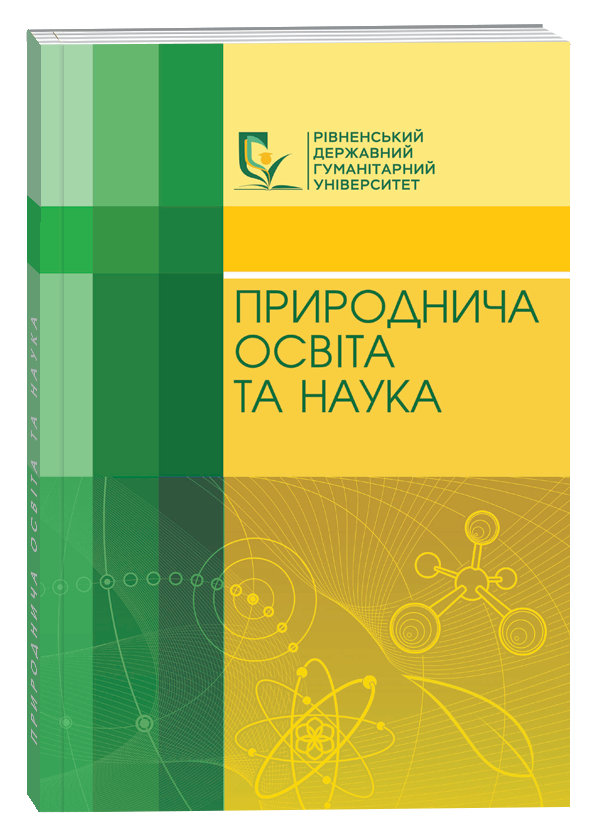RESEARCH OF THE ECOLOGICAL AND TOXICOLOGICAL STATE OF THE KHOROL RIVER WITHIN THE BOUNDARIES OF THE CITY OF MYRGOROD
Abstract
Analyzing the achievements of recent years in the field of application of the biotesting method in environmental practice, it should be noted that the possibilities of implementing biological tests are multifaceted and promising. Biological tests are available and cheap (when using modifications specially developed for practical needs), do not require special training of specialists and can be easily applied in production and research laboratories. The work presents the results of ecological and toxicological studies of the water quality of the Khorol River within the city of Myrhorod. In the educational and research laboratory of ecological and toxicological studies of the educational and scientific institute of ecology of the Kharkiv National University named after V. N. Karazin conducted a series of experimental studies to determine the chronic toxicity of water from the Khorol River, for this purpose, a biotesting method was used to determine the chronic toxicity of water on the crustacean Ceriodaphnia affinis Lilljeborg, which is based on establishing the difference between the survival and (or) fecundity of ceriodaphnia in the water being analyzed (experiment) and in the water in which ceriodaphnia are cultivated (control). Sampling of surface water from the Khorol River within the city of Myrhorod was carried out in July and October 2024. Samples were taken from 7 sections of the Khorol River. As a result of the experimental studies, toxic properties in water samples from the Khorol River were determined in 10 out of 14 samples, i.e. 71%. Unsatisfactory quality of 10 water samples from the Khorol River within the city of Myrhorod in the summer and autumn periods can be explained by the influence of surface runoff from the urbanized area, wastewater discharges by municipal enterprises and difficult climatic conditions for aquatic biocenoses this summer. The results of biotesting can be used for screening of toxic environmentally hazardous chemicals and mixtures proposed for use in various sectors of the economy; monitoring the toxicity of various categories of return waters at all stages of their formation and at discharges into surface water bodies; determining the toxic properties of surface, groundwater and drinking waters.
References
2. Bennett E.M., Peterson G.D., Gordon L.J. Understanding relationships among multiple ecosystem services. Ecol. Lett. 2009. № 12. Р. 1394–1404. DOI: https://doi.org/10.1111/j.1461-0248.2009.01387.x.
3. Caracciolo R., Escher B.I., Yin Lai F., An Nguyen T. Impact of a megacity on the water quality of a tropical estuary assessed by a combination of chemical analysis and in-vitro bioassays. Science of The Total Environment. 2023. № 877. Р. 9697. DOI: https://doi.org/10.1016/j.scitotenv.2023.162525.
4. Guo J., Mo J., Qi Q., Peng J., Qi G., Kanerva M., Iwata H., Li Q. Prediction of adverse effects of effluents containing phenolic compounds in the Ba River on the ovary of fish (Hemiculter leucisculus) using transcriptomic and metabolomic analyses. Science of The Total Environment. 2021. № 801. Р. 149554. DOI: https://doi.org/10.1016/j.scitotenv.2021.149554.
5. Hale S. E., Škulcová L., Pípal M., Cornelissen G., Oen A. M.P., Eek E., Bielská L. Monitoring wastewater discharge from the oil and gas industry using passive sampling and Danio rerio bioassay as complimentary tools. Chemosphere. 2019. № 216. pp. 404–412. DOI: https://doi.org/10.1016/j.chemosphere.2018.10.162.
6. Schuijt L.M., Peng F., Berg S.J.P., Milou M.L. (Eco)toxicological tests for assessing impacts of chemical stress to aquatic ecosystems: Facts, challenges, and future. Science of The Total Environment. 2021. № 795. Р. 148776. DOI: https://doi.org/10.1016/j.scitotenv.2021.148776.
7. Leusch F.D.L., Neale P.A., Grimaldi M., Leroy G., Scheurer M., Schlichting R., Schriks M., Hebert A. Analysis of endocrine activity in drinking water, surface water and treated wastewater from six countries. Water Research. 2018. № 139. Р. 10–18. DOI: https://doi.org/10.1016/j.watres.2018.03.056.
8. Macova M., Toze S., Hodgers L., Mueller J.F., Bartkow M., Escher B.I. Bioanalytical tools for the evaluation of organic micropollutants during sewage treatment, water recycling and drinking water generation. Water Research. 2011. № 45. pp. 4238–4247. https://doi.org/10.1016/j.watres.2011.05.032.
9. Zhang L., Zhang Y., Zhu M., Chen L., Wu B. A critical review on quantitative evaluation of aqueous toxicity in water quality assessment. Chemosphere. 2023. № 342. p. 140159. https://doi.org/10.1016/j.chemosphere.2023.140159.






